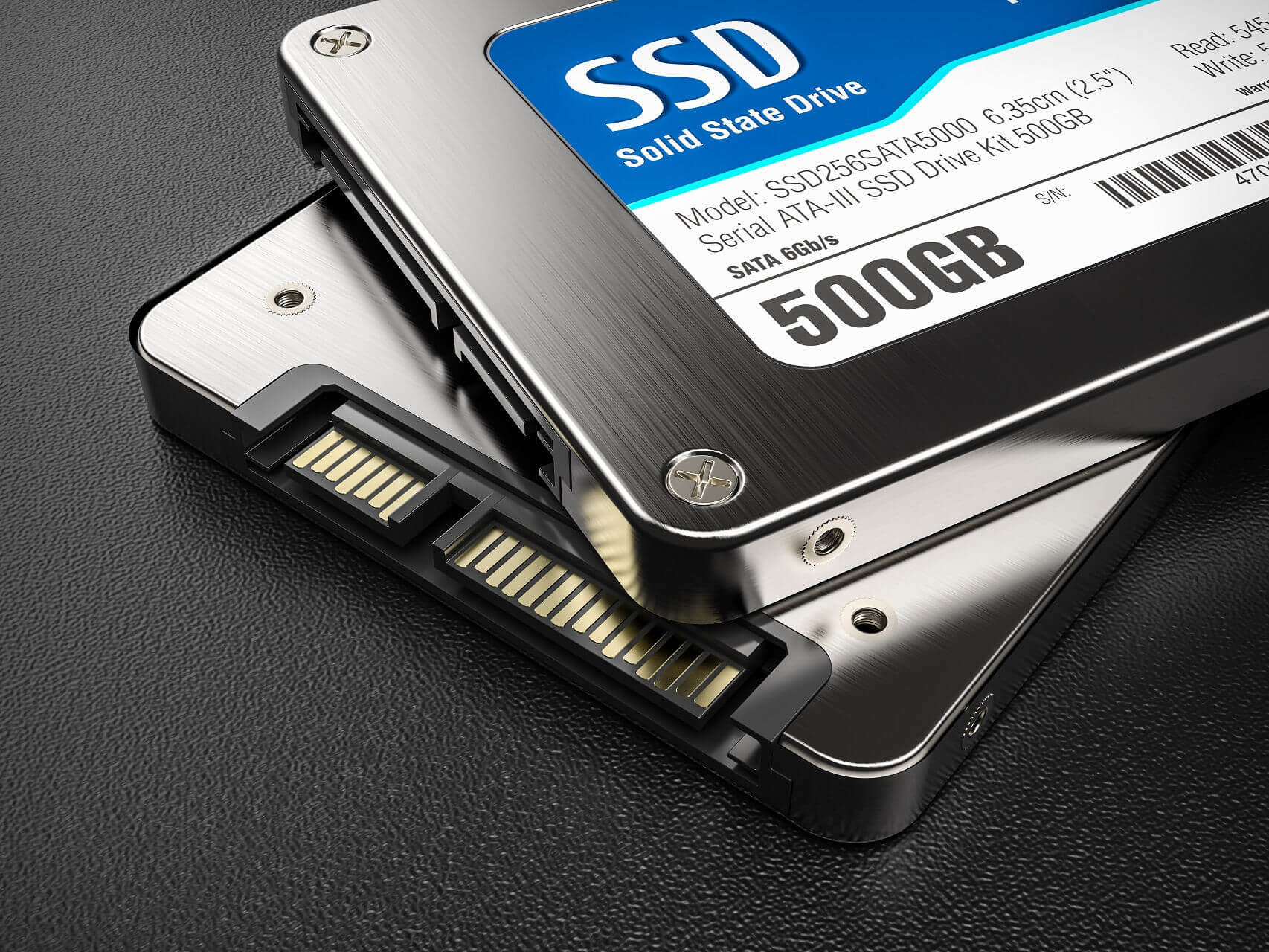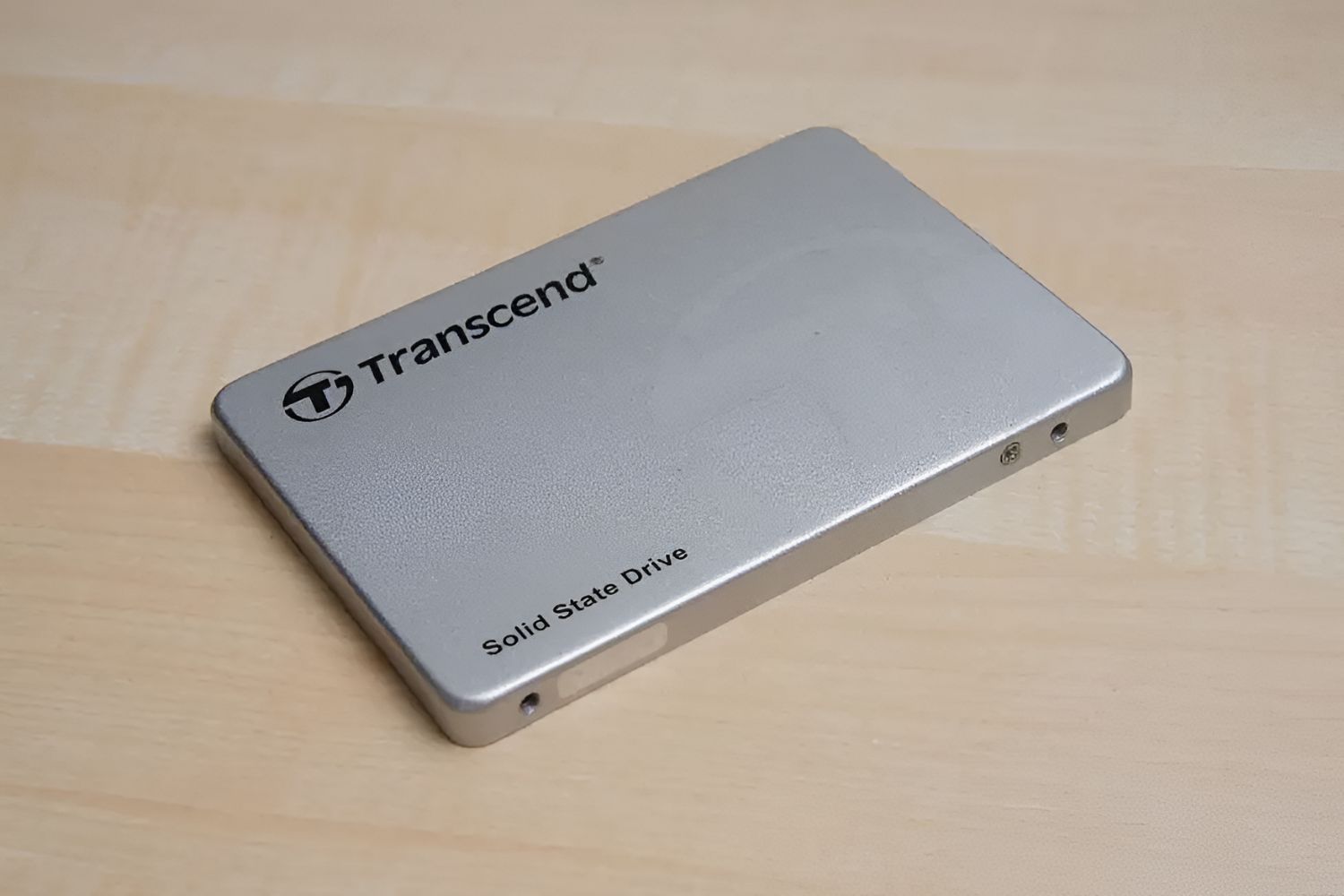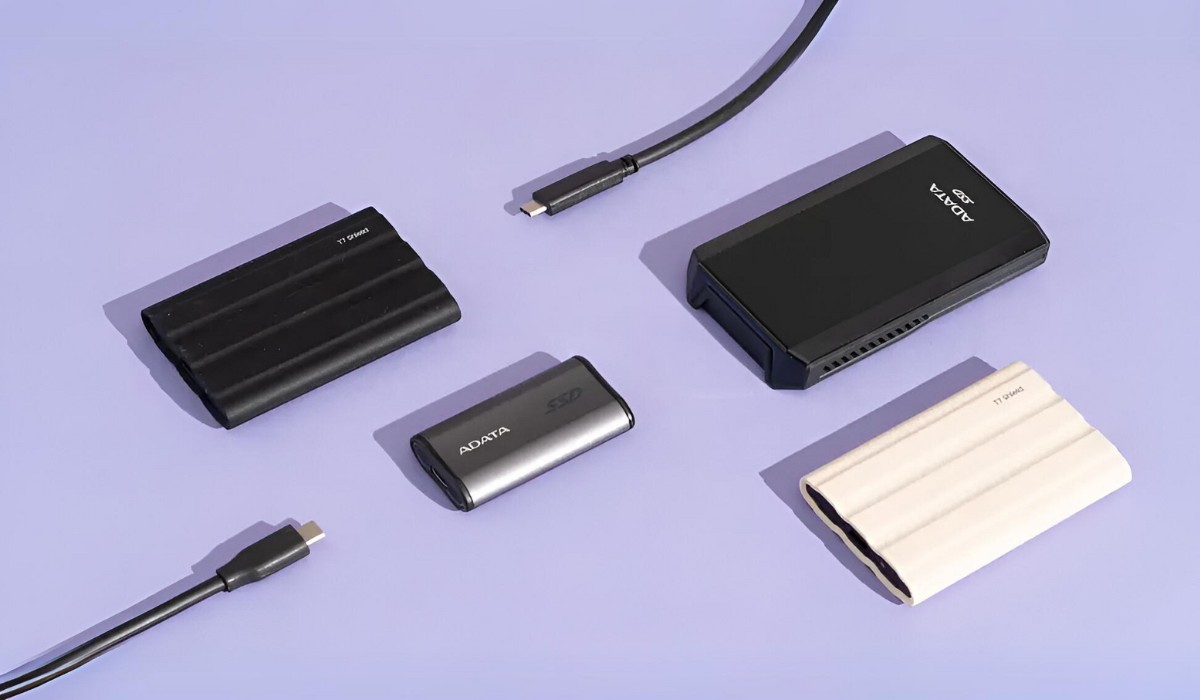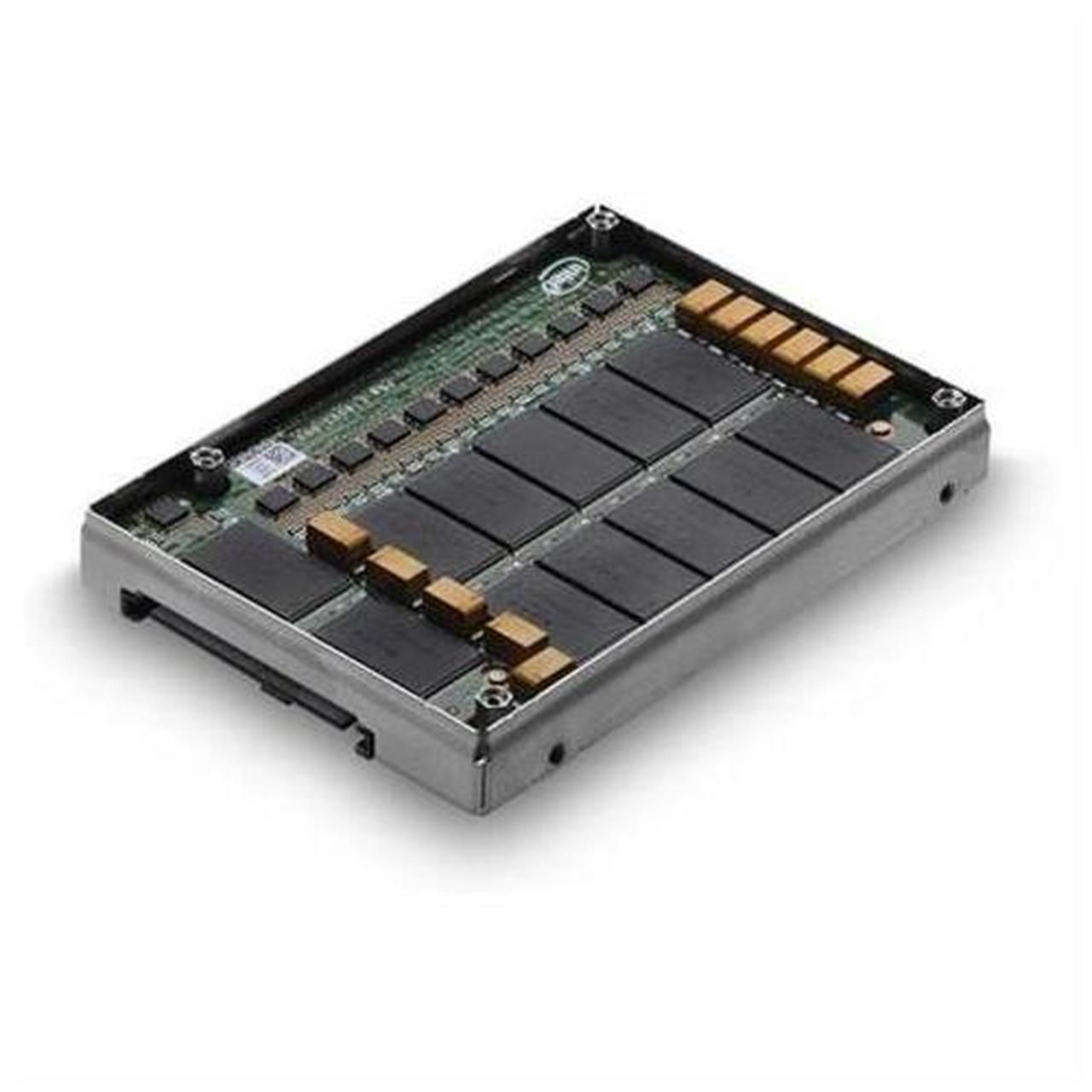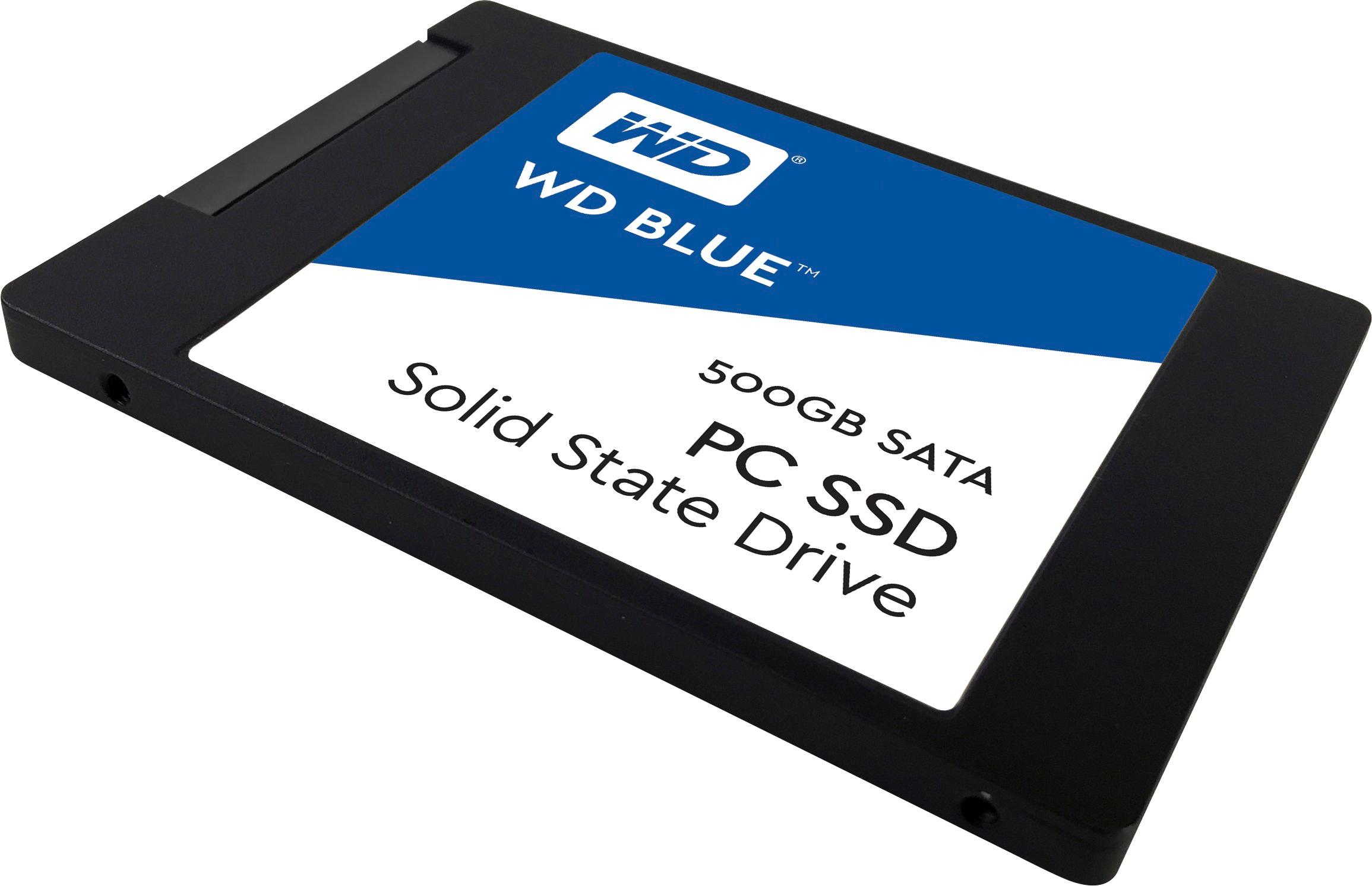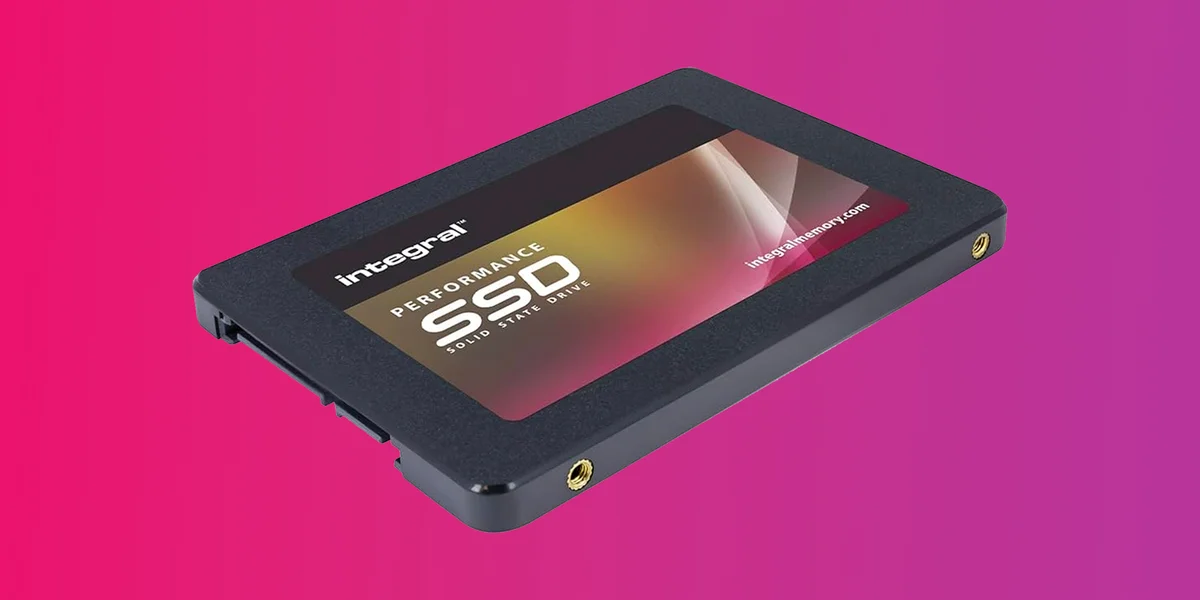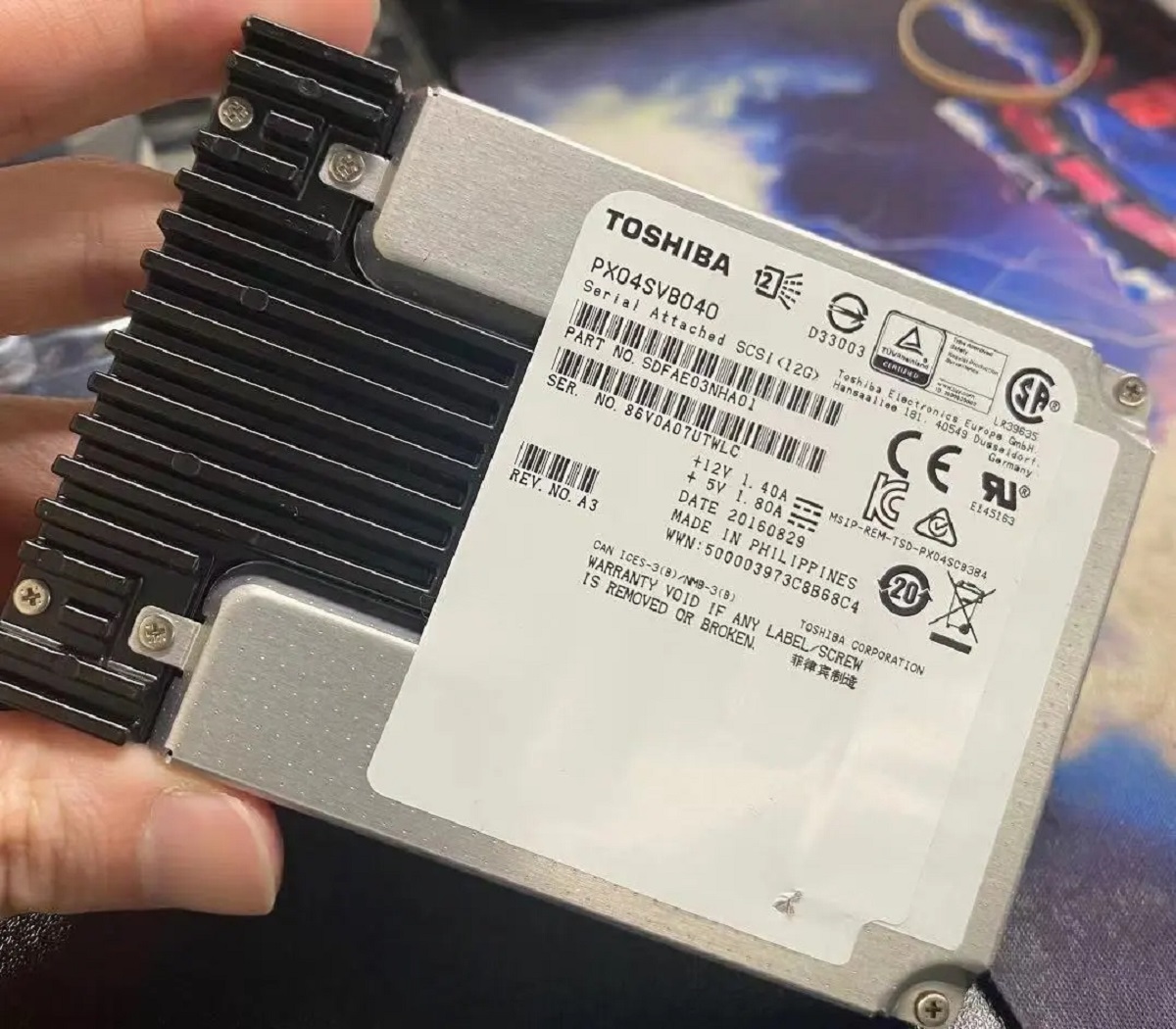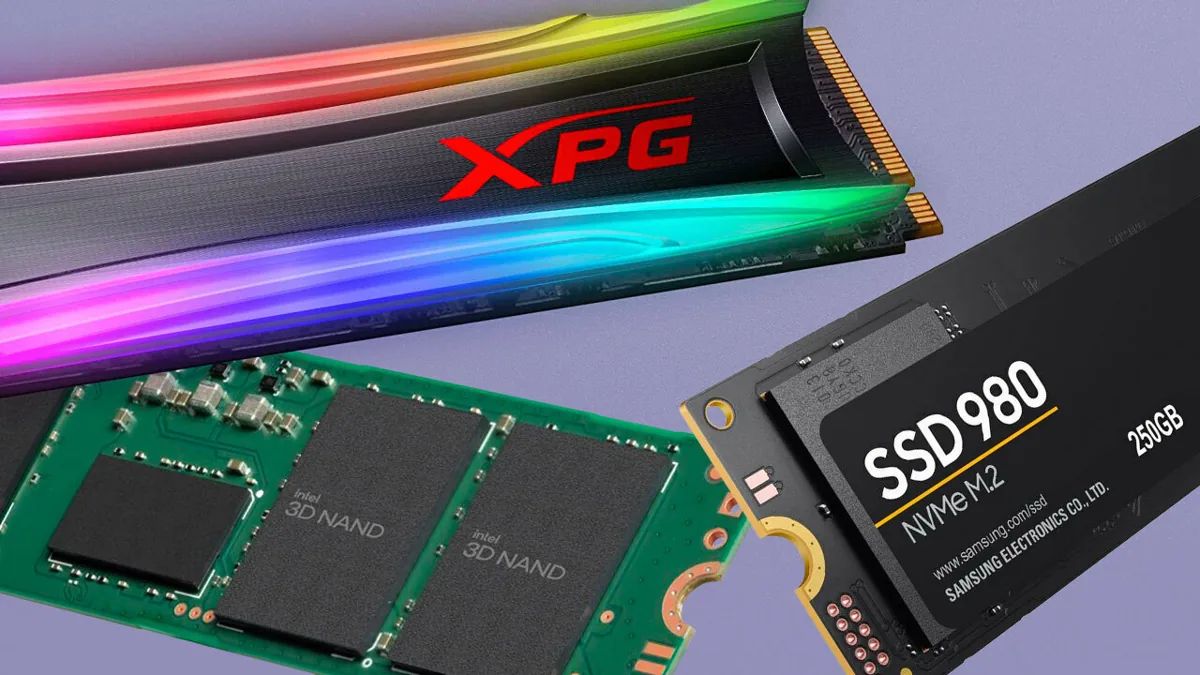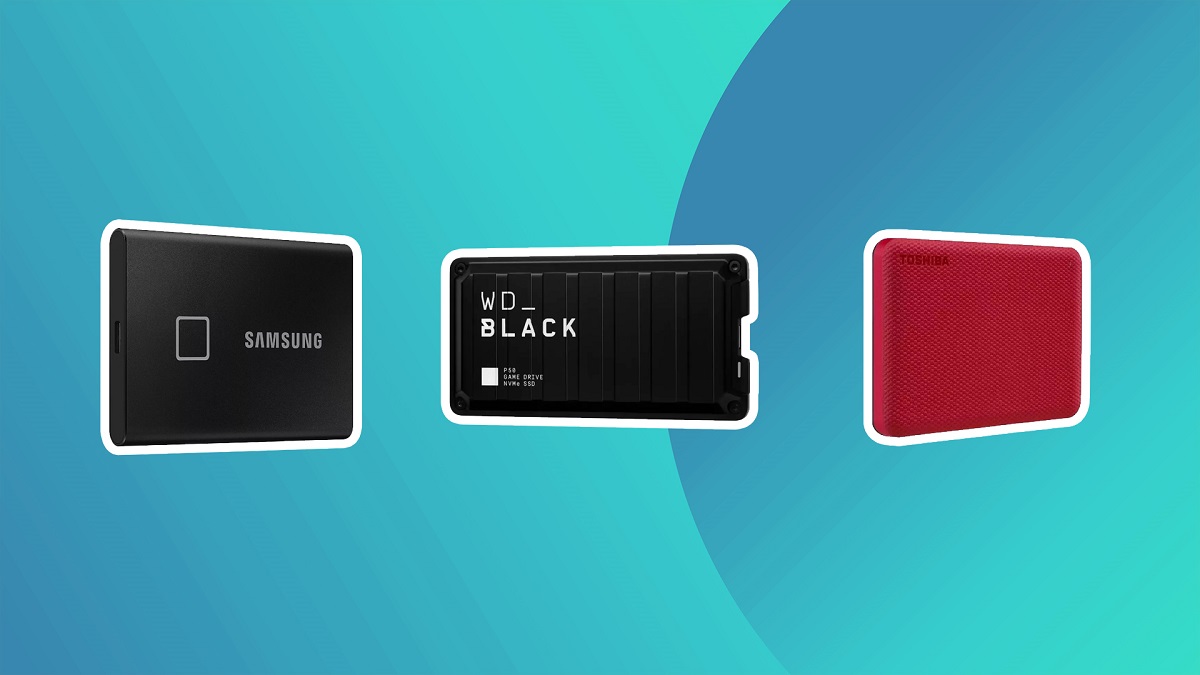Introduction
Solid state drives (SSDs) have revolutionized the storage industry with their faster performance and reliability compared to traditional hard disk drives (HDDs). As more and more people are making the switch to SSDs, it is important to understand the different types of memory that these drives use.
An SSD is a data storage device that uses NAND flash memory to store and retrieve data. Unlike HDDs, which rely on spinning platters and mechanical read/write heads, SSDs use electronic components to store data, resulting in significantly faster access times and improved durability.
The memory used in SSDs plays a crucial role in determining their performance, lifespan, and cost. There are various types of memory technologies employed in SSDs, each with its own advantages and drawbacks. These memory types include Single-Level Cell (SLC) memory, Multi-Level Cell (MLC) memory, Triple-Level Cell (TLC) memory, Quad-Level Cell (QLC) memory, and 3D NAND memory.
What is a solid state drive (SSD)?
A solid state drive (SSD) is a type of storage device that is used to store and retrieve digital data. Unlike traditional hard disk drives (HDDs), which use spinning platters and mechanical read/write heads to store data, SSDs utilize NAND flash memory technology. This difference in technology results in several advantages for SSDs, including faster performance, increased durability, and lower power consumption.
SSDs have gained popularity in recent years due to their superior performance compared to HDDs. They offer faster data transfer speeds, shorter boot times, and quicker application load times, making them ideal for tasks that require high-speed data access, such as gaming, video editing, and multimedia production. Additionally, SSDs are more resistant to physical shock and vibrations, making them a reliable choice for portable devices like laptops and tablets.
Another significant advantage of SSDs is their lower power consumption. Since SSDs do not have any moving parts, they require less energy to operate than HDDs, resulting in longer battery life for laptops and reduced electricity costs for desktop computers. This energy-efficient feature makes SSDs an environmentally-friendly storage solution.
In terms of physical appearance, SSDs typically come in the same form factors as traditional HDDs, including 2.5-inch, M.2, and PCIe. This allows SSDs to be easily integrated into existing systems without any major modifications. Some SSDs are designed to be plugged into a PCIe slot on the motherboard, providing even faster data transfer speeds compared to SATA-based SSDs.
Overall, SSDs offer numerous benefits over traditional HDDs, including improved performance, enhanced durability, and lower power consumption. As the demand for faster and more reliable storage options continues to grow, SSDs are becoming the preferred choice for individuals and businesses alike.
How does an SSD store data?
Understanding how an SSD stores data is key to appreciate its efficiency and speed. Unlike traditional hard disk drives (HDDs), SSDs utilize a different mechanism to store and retrieve data.
SSDs use a technology called NAND flash memory to store data. NAND flash memory consists of memory cells that are organized into pages and blocks. Each memory cell can store multiple bits of data, which allows for higher storage density compared to other types of memory.
When data needs to be stored on an SSD, it is divided into small chunks called pages. These pages are then written to the NAND flash memory cells. What sets SSDs apart from HDDs is that they can write data to individual pages, without the need to move a read/write head or locate a specific sector on a spinning disk. This enables SSDs to have much faster read and write speeds compared to HDDs, resulting in improved performance.
To store data efficiently, SSDs group these pages together into blocks. Each block consists of multiple pages and is the smallest unit that can be erased. When new data needs to be written, the SSD writes it to an empty page within a block. However, SSDs cannot modify individual pages; instead, they have to erase an entire block before new data can be written to it.
To address this limitation, SSDs employ a process called garbage collection. When data is deleted or becomes outdated, the SSD marks the corresponding pages as invalid. During idle time, the garbage collection process identifies and erases blocks that contain only invalid pages. This frees up space for new data to be written, ensuring efficient storage management and maintaining optimal performance.
Overall, SSDs store data using NAND flash memory and can quickly read and write data to individual pages without any physical movement. By leveraging this advanced technology, SSDs provide faster and more reliable storage solutions compared to HDDs.
Memory types used in SSDs
The memory technology used in solid state drives (SSDs) plays a crucial role in their performance, endurance, and cost. Several different memory types have been developed to meet varying storage needs. Let’s explore the most common memory types used in SSDs:
-
SLC (Single-Level Cell) Memory:
SLC memory is the most expensive and highest-performing type of NAND flash memory. In SLC, each memory cell stores one bit of data. This results in faster read and write speeds, higher endurance, and lower power consumption compared to other memory types. SLC is commonly used in enterprise-grade SSDs and applications that demand the highest level of performance and reliability.
-
MLC (Multi-Level Cell) Memory:
MLC memory stores multiple bits of data per memory cell, typically two or four bits. This higher density per cell allows for more cost-effective storage solutions. However, MLC SSDs generally have slower performance and lower endurance compared to SLC-based SSDs. MLC memory is commonly used in consumer-grade SSDs and can provide a good balance between performance and cost.
-
TLC (Triple-Level Cell) Memory:
TLC memory stores three bits of data per memory cell, resulting in even higher storage density and lower cost per gigabyte. However, the tradeoff is slightly slower performance and lower endurance compared to MLC-based SSDs. TLC memory is commonly used in mainstream consumer SSDs, offering affordable storage solutions for everyday computing needs.
-
QLC (Quad-Level Cell) Memory:
QLC memory stores four bits of data per memory cell, further increasing storage density and lowering costs. However, QLC-based SSDs have the slowest performance and lowest endurance among the different memory types. QLC memory is often used in budget-friendly consumer SSDs, providing high-capacity storage for general-purpose use.
-
3D NAND Memory:
3D NAND is a revolutionary memory technology used in modern SSDs. It stacks memory cells vertically, enabling significantly higher storage capacity within a smaller footprint. 3D NAND-based SSDs can offer improved performance, higher endurance, and better reliability compared to traditional planar NAND flash memory.
It is important to note that as technology evolves, the boundaries between memory types may blur, and hybrid approaches may emerge to combine the strengths of different memory types, such as SLC caching in MLC-based SSDs. Understanding the different memory types used in SSDs can help you make an informed decision when choosing the right SSD for your specific needs.
SLC (Single-Level Cell) Memory
SLC (Single-Level Cell) memory is a high-performance and expensive type of NAND flash memory used in solid state drives (SSDs). In SLC memory, each memory cell stores a single bit of data. This means that each cell can only be in one of two states, representing a 0 or a 1. The simplicity of this storage configuration allows for faster read and write speeds, higher endurance, and lower power consumption compared to other memory types.
The key advantage of SLC memory is its exceptional performance. With a single bit per memory cell, SLC-based SSDs can achieve faster data transfer rates, resulting in shorter access times and improved responsiveness. This makes SLC memory ideal for applications that demand high-speed data processing, such as enterprise servers, databases, and professional-grade workstations.
Another significant benefit of SLC memory is its excellent endurance. Since each memory cell is only used to store a single bit, the wear on the cells is significantly reduced, resulting in longer lifespan and better reliability. This makes SLC-based SSDs well-suited for heavy write workload environments, where data is constantly written and overwritten, without compromising the drive’s performance or durability.
In addition, SLC memory consumes less power compared to other memory types. The simplicity of the storage configuration enables SLC-based SSDs to operate with lower voltage requirements, resulting in reduced power consumption. This makes SLC memory an ideal choice for battery-powered devices like laptops and tablets, where power efficiency is crucial for prolonging battery life.
However, it’s important to note that SLC memory comes at a higher cost compared to other memory types. The manufacturing process for SLC memory is more complex, and the storage density per chip is lower. As a result, SLC-based SSDs are generally more expensive than SSDs utilizing other memory types. Nevertheless, for applications that require the highest level of performance and reliability, the investment in SLC-based SSDs can be justified.
In summary, SLC (Single-Level Cell) memory offers exceptional performance, endurance, and power efficiency compared to other memory types used in SSDs. While it may come at a higher cost, SLC-based SSDs are the preferred choice for applications that demand top-notch performance and reliability, such as enterprise servers and professional workstations.
MLC (Multi-Level Cell) Memory
MLC (Multi-Level Cell) memory is a common type of NAND flash memory used in solid state drives (SSDs). Unlike SLC memory, which stores a single bit per memory cell, MLC memory stores multiple bits of data per cell, typically two or four bits. This higher storage density allows for more cost-effective SSD solutions while still providing good performance and reliability.
MLC-based SSDs offer a balance between cost and performance. With the ability to store more bits per cell, MLC memory allows for higher storage capacities on SSDs, making them suitable for a wide range of applications. MLC-based SSDs perform faster than traditional hard disk drives (HDDs) and provide improved overall system responsiveness. They are commonly used in consumer-grade SSDs where a good balance between cost and performance is desired.
While MLC memory offers higher storage density, it tends to have slightly slower performance and lower endurance compared to SLC memory. This is because the more bits stored per cell, the more complex the retrieval process becomes, resulting in slightly slower read and write speeds. MLC-based SSDs also have a limited number of program/erase cycles per memory cell compared to SLC, meaning they have a lower endurance rating. However, advancements in MLC technology have improved its performance and endurance over the years, making it a reliable choice for mainstream SSDs.
Despite these limitations, MLC-based SSDs are well-suited for everyday computing tasks and can handle a variety of workloads, including operating systems, applications, and multimedia files. They provide a good balance between cost-effectiveness and performance, making them an attractive choice for most consumer and business applications.
As with other types of NAND flash memory, MLC memory also utilizes wear-leveling algorithms and error correction techniques to maximize the lifespan and reliability of the SSD. These technologies help distribute the write and erase cycles evenly across the memory cells, minimizing the impact of data retention and improving the overall longevity of the drive.
In summary, MLC (Multi-Level Cell) memory offers a good balance between cost and performance in solid state drives. While not as fast or durable as SLC memory, MLC-based SSDs provide higher storage density at a more affordable price point. They are an excellent choice for consumer-grade SSDs that require faster performance and increased storage capacity for everyday computing tasks.
TLC (Triple-Level Cell) Memory
TLC (Triple-Level Cell) memory is a popular type of NAND flash memory used in solid state drives (SSDs). As the name suggests, TLC memory stores three bits of data per memory cell, allowing for even higher storage density compared to MLC memory. This increased density results in more cost-effective SSD solutions, making TLC-based SSDs more accessible to a wider range of users.
One of the main advantages of TLC memory is its affordability. With three bits stored per memory cell, TLC-based SSDs can offer higher storage capacities at a lower cost per gigabyte compared to SLC and MLC memory. This makes them an attractive option for budget-conscious consumers who require large storage capacities without breaking the bank.
However, there are trade-offs when it comes to TLC memory. The higher density per cell leads to slower performance and reduced endurance compared to MLC-based SSDs. Retrieving three bits of data from a single cell requires more complex processing, which can result in slower read and write speeds. Additionally, TLC memory typically has a lower program/erase cycle limit per cell, decreasing its overall endurance compared to MLC memory.
To mitigate these limitations, SSD manufacturers have implemented various technologies, such as advanced error correction algorithms and wear-leveling mechanisms. These technologies help improve the reliability and longevity of TLC-based SSDs by minimizing data errors and evenly distributing the write and erase cycles across the memory cells.
TLC-based SSDs are well-suited for general-purpose use, such as everyday computing tasks, web browsing, and multimedia consumption. They provide a good balance between cost and performance, offering larger storage capacities at a reasonable price point. However, they may not be the best choice for applications that require frequent and intensive data write operations, as the lower endurance of TLC memory could impact the lifespan of the drive.
Overall, TLC (Triple-Level Cell) memory is a cost-effective solution that strikes a balance between storage capacity and affordability in SSDs. While slower and less durable compared to SLC and MLC memory, TLC-based SSDs offer sufficient performance for most everyday computing needs, making them a popular choice among consumers and businesses alike.
QLC (Quad-Level Cell) Memory
QLC (Quad-Level Cell) memory is a type of NAND flash memory commonly used in solid state drives (SSDs). With QLC memory, each memory cell can store four bits of data, providing even higher storage density compared to TLC memory. This increased density allows for more cost-effective SSD solutions, offering large storage capacities at affordable prices.
The main advantage of QLC memory is its high storage density and lower cost per gigabyte. By storing four bits per memory cell, QLC-based SSDs can provide larger storage capacities compared to other memory types, making them suitable for storing massive amounts of data, such as multimedia files, large databases, and archival storage. Additionally, the lower cost per gigabyte makes QLC-based SSDs appealing to users looking for affordable high-capacity storage solutions.
However, there are trade-offs associated with QLC memory. While it offers higher storage density, QLC-based SSDs tend to have slower performance and lower endurance compared to other memory types. Retrieving and storing four bits per cell requires more complex read and write operations, resulting in slower data transfer speeds. Additionally, the increased density leads to a higher vulnerability to data errors and a lower number of program/erase cycles, reducing the overall endurance of QLC-based SSDs.
To address these limitations, manufacturers employ various techniques, such as advanced error correction algorithms and wear-leveling strategies, to improve reliability and extend the lifespan of QLC-based SSDs. These technologies help mitigate the impact of data errors and distribute the write and erase cycles evenly across the memory cells, ensuring a more balanced wear pattern.
QLC-based SSDs are well-suited for applications that require large storage capacities but do not demand the highest level of performance or endurance. They are suitable for tasks such as storing large media libraries, running virtual machines, and general-purpose storage needs. However, due to their slower performance and lower endurance, QLC-based SSDs may not be recommended for applications involving frequent and intensive write operations.
In summary, QLC (Quad-Level Cell) memory offers high-density storage and cost-effective solutions for SSDs. It provides larger storage capacities and lower cost per gigabyte, making it an attractive option for users seeking affordable high-capacity storage. While QLC-based SSDs may have slower performance and lower endurance compared to other memory types, they serve as a suitable choice for general-purpose storage applications that require large capacities at reasonable prices.
3D NAND Memory
3D NAND memory is an innovative type of NAND flash memory used in solid state drives (SSDs). Unlike traditional planar NAND memory, which is arranged in a 2D structure, 3D NAND memory stacks memory cells vertically, allowing for higher storage capacities and improved performance.
The main advantage of 3D NAND memory is its increased storage density. By stacking memory cells vertically, 3D NAND memory can achieve higher capacities within a smaller physical footprint. This enables SSDs to offer larger storage options, ranging from consumer-grade SSDs to enterprise-level storage solutions, accommodating the ever-increasing demand for storage capacity.
In addition to higher storage density, 3D NAND memory also provides improved performance. With the ability to stack memory cells in multiple layers, data can be accessed and written more efficiently. This results in faster read and write speeds, reducing latency and enhancing overall system responsiveness. 3D NAND-based SSDs can deliver faster boot times, quicker application load times, and smoother multitasking capabilities.
Another significant advantage of 3D NAND memory is its enhanced endurance compared to traditional planar NAND memory. The vertical structure of 3D NAND enables better wear leveling, which evenly distributes write and erase cycles across the memory cells. This helps prolong the lifespan and reliability of the SSD, making it suitable for both consumer and enterprise applications where durability is important.
Furthermore, 3D NAND memory offers improved power efficiency. Because of its vertical structure, 3D NAND requires less power to operate compared to planar NAND flash memory. This results in lower power consumption, which is particularly beneficial for portable devices like laptops and tablets, as it helps extend battery life.
3D NAND memory is continuously evolving, with advancements being made to further improve storage density and performance. Manufacturers are stacking more layers in 3D NAND structures, resulting in even greater storage capacities and faster speeds. Additionally, the continued development of 3D NAND technology is helping to drive down the cost per gigabyte, making it an increasingly cost-effective solution for consumers.
In summary, 3D NAND memory offers higher storage capacities, improved performance, enhanced endurance, and better power efficiency compared to traditional planar NAND memory. It has become the preferred choice for SSDs, providing users with larger storage options and faster speeds while maintaining reliability and energy efficiency.
Pros and Cons of Different Memory Types
Solid state drives (SSDs) utilize different types of memory technology, each with its own set of advantages and disadvantages. Understanding the pros and cons of these memory types can help you make an informed decision when choosing an SSD that best suits your needs. Let’s explore the key characteristics of each memory type:
SLC (Single-Level Cell) Memory:
- Pros:
- Fastest read and write speeds among all memory types.
- Exceptional endurance and reliability.
- Lower power consumption.
- Cons:
- Expensive compared to other memory types.
- Lower storage density per chip.
MLC (Multi-Level Cell) Memory:
- Pros:
- Higher storage density compared to SLC memory.
- Good balance between cost and performance.
- Cons:
- Slightly slower performance compared to SLC memory.
- Limited endurance compared to SLC memory.
TLC (Triple-Level Cell) Memory:
- Pros:
- Higher storage density compared to MLC memory.
- More cost-effective solution.
- Cons:
- Slower performance compared to MLC memory.
- Lower endurance compared to MLC memory.
QLC (Quad-Level Cell) Memory:
- Pros:
- Highest storage density among all memory types.
- Most cost-effective solution.
- Cons:
- Slower performance compared to other memory types.
- Lowest endurance among all memory types.
3D NAND Memory:
- Pros:
- Higher storage density within a smaller physical footprint.
- Improved performance.
- Enhanced endurance and reliability.
- Better power efficiency.
- Cons:
- Higher cost compared to traditional planar NAND memory.
In summary, different memory types used in SSDs offer a range of benefits and drawbacks. Depending on your specific needs, you can choose a memory type that prioritizes performance, endurance, cost, or a balance of these factors. Assessing the pros and cons of each memory type will help you select the SSD that best aligns with your requirements and budget.
Conclusion
Solid state drives (SSDs) have revolutionized the storage industry and provided users with faster, more reliable, and efficient storage solutions compared to traditional hard disk drives (HDDs). Understanding the different types of memory used in SSDs is crucial in choosing the right SSD for your specific needs.
SLC (Single-Level Cell) memory offers exceptional performance, higher endurance, and lower power consumption, making it ideal for professional-grade applications that demand top-notch speed and reliability. However, SLC memory comes at a higher cost.
MLC (Multi-Level Cell) memory strikes a balance between cost and performance, providing higher storage density and good endurance. It is commonly used in consumer-grade SSDs.
TLC (Triple-Level Cell) memory further increases storage density and affordability but sacrifices a bit of performance and endurance. It is well-suited for general-purpose use and offers good value for the money.
QLC (Quad-Level Cell) memory offers the highest storage density but compromises performance and endurance. QLC-based SSDs are cost-effective options for consumers requiring high-capacity storage.
3D NAND memory, with its vertical stacking of memory cells, provides higher storage capacities, improved performance, endurance, and power efficiency. It serves as an efficient solution for various storage needs.
Overall, the choice of memory type depends on individual requirements and budget considerations. It is important to carefully assess the pros and cons of each memory type to select the SSD that best matches your needs. Whether it is high-performance SLC-based SSDs or cost-effective QLC-based SSDs, the evolution of SSD technology continues to offer faster, more reliable, and affordable storage solutions for a wide range of applications.







